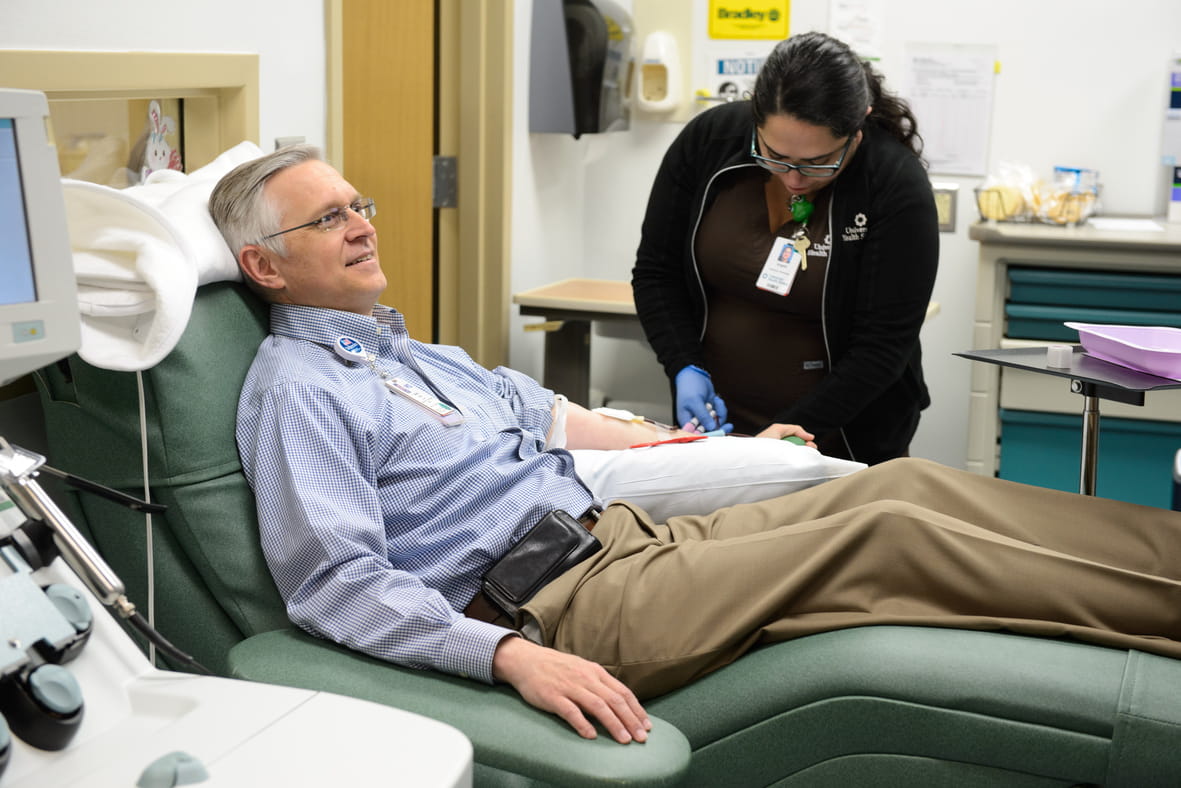Whether you’re newly diagnosed with diabetes or have had the condition for a while, knowing what to eat can be a challenge. Understanding what goes into a diabetic meal plan can help.
While the saying “you are what you eat” isn’t quite right, what you eat plays a key role in keeping you healthy when you have diabetes.
“Eating a healthy diet is essential for everyone, but it’s especially important for people with diabetes,” says Linda Ozenbaugh, a registered dietitian with University Health. “A well-balanced meal plan can help control your blood sugar levels, manage your weight and reduce your risks of complications.”
But what should you eat? While it may seem overwhelming to plan out meals and snacks, it doesn’t have to be. Learning the basics of a diabetic meal plan can help.
6 Tips for Creating a Diabetic Meal Plan
There’s a common misconception when it comes to a diabetic meal plan: Those with diabetes have to eat foods that avoid all sugar and carbs and have limited flavor. That’s simply not true!
You can eat a diet that’s packed with flavor and a delight for your tastebuds. It’s all about experimenting with healthy foods and finding ways to jazz up recipes.
A personalized diabetic meal plan can help you find foods you love and a diet that works for you. To create one, start here:
1. Talk with the experts first
Consulting with your medical provider or a registered dietitian can give you a good starting point. Your care team will know your specific blood sugar target and other facts about your health, and that information will help them create a plan that’s right for you.
2. Make it realistic
Consider your lifestyle and preferences. If you don’t have a ton of time to cook, you need quick and easy recipes. If you hate fish, it probably shouldn’t be a regular addition to your meals. Taking these factors into account will make your meal plan sustainable.
3. Pack in the veggies
Fill half of your plate at meals with non-starchy vegetables, which are low in calories and carbs and filled with the good stuff — vitamins, minerals, and antioxidants. Broccoli, cauliflower, spinach, kale, and Brussel sprouts are all good choices.
4. Choose protein wisely
One-fourth of your plate at meals should contain a lean protein source, such as fish, chicken, turkey, beans, tofu or eggs. Prepare them by baking, broiling or grilling them to enhance their flavor in a healthy way.
5. Include some foods only in moderation
While processed foods are often convenient and easy, they’re also often high in unhealthy fats, added sugar and excess sodium. It’s also important to watch what you’re drinking, since sugary drinks can cause spikes in blood sugar.
6. Find healthy recipes you enjoy
You don’t have to eat foods you hate! There are many diabetes-friendly recipes available online and in cookbooks. Once you find your favorites, you can build around those recipes.
One other key tip? Drink up! “Drink plenty of water,” Ozenbaugh says. “Water is essential for good health, and it can help control blood sugar levels.”
Sample Diabetic Meal Plan
Still not quite sure what you should be eating? Ozenbaugh offers some suggestions:
Breakfast
- Oatmeal with berries and nuts
- Whole-wheat toast with eggs and avocado
- Greek yogurt with fruit and granola
Lunch
- Salad with grilled chicken or fish
- Lentil soup
- Sandwich on whole-wheat bread and lean protein, vegetables and cheese
Dinner
- Salmon with roasted vegetables
- Quinoa stir fry
- Chicken chili
Snacks
- Fruits and vegetables
- Nuts and seeds
- Hard-boiled eggs
- Yogurt
“This is just a sample meal plan, and you may need to adjust it based on your individual needs and preferences,” Ozenbaugh adds. “Creating a personalized diabetic meal plan can take some time and effort, but it’s worth it in the long run. A healthy diet can help manage your diabetes and improve your overall health.”
Diabetes Nutrition at University Health
Learn how to manage your diabetes and cook healthy meals at the Texas Diabetes Institute. Our diabetes educators are certified by the American Diabetes Association and can help you create a personalized fitness and meal plan to reach your health goals. Learn more about our diabetes classes online.




